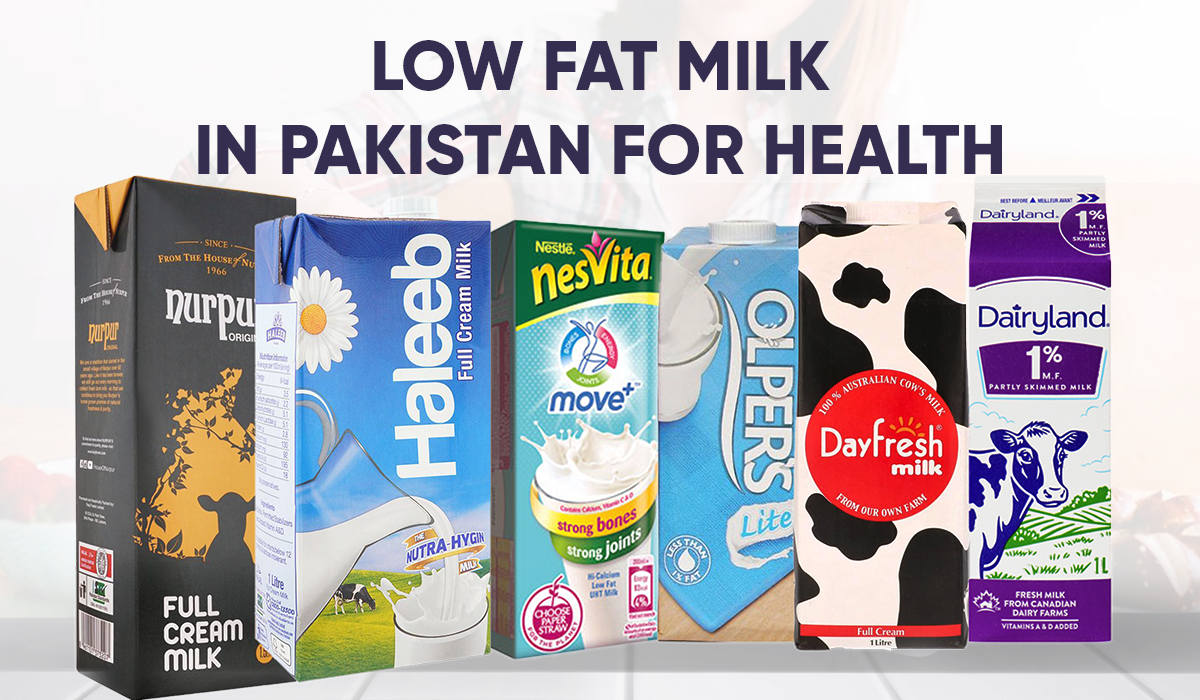
5 Key Benefits of low-fat Milk in Pakistan for Health
In Pakistan, the dairy industry plays a significant role in the country's agriculture and food scene. One trend that's been gaining momentum is the increasing preference for low-fat milk. This blog will dive into everything about low-fat milk in Pakistan - how it's made, its health benefits, and why more people are choosing it over traditional milk options. We aim to provide simple, helpful information that makes it easier for you to understand the rise of low-fat milk in Pakistan and how it fits into a healthier lifestyle.
Understanding Milk Fat and Health Implications
Difference between whole milk, low-fat milk, and skim milk:
Whole milk contains about 3.25% milk fat, making it the richest in flavor and texture. Low-fat milk, typically labeled as containing 1% or 2% fat, offers a reduced fat option while still retaining a significant portion of the nutrients found in whole milk. Skim milk goes a step further, removing almost all the fat content, resulting in a product with less than 0.5% fat.
Health implications of consuming high-fat vs. low-fat milk:
The health implications of consuming high-fat versus low-fat milk can be significant, especially when considering long-term dietary patterns. High-fat dairy products, like whole milk, contain higher levels of saturated fats, which, when consumed in excess, can contribute to increased risk of heart disease, obesity, and other health issues. Conversely, low-fat milk provides a healthier alternative, offering a way to enjoy the benefits of milk, such as calcium, vitamin D, and protein, with less risk associated with high saturated fat intake.
Choosing between whole milk, low-fat milk, and skim milk often depends on individual health goals, dietary needs, and personal preferences. For those looking to reduce their calorie intake or manage their cholesterol levels, low-fat milk presents a balanced option without sacrificing nutritional value. By making informed decisions about the type of milk we consume, we can better support our overall health and well-being.
low-fat milk available in Pakistan
Haleeb Lite: Haleeb Lite is a popular low-fat milk option in Pakistan, offering consumers the goodness of milk with reduced fat content. It is enriched with essential nutrients like calcium and protein, making it an ideal choice for those looking to maintain a balanced diet while reducing their calorie intake. Haleeb Lite is known for its creamy texture and refreshing taste, making it a favorite among health-conscious individuals.
Nestlé Nesvita Pro-Digest: Nestlé Nesvita Pro-Digest is specially formulated low-fat milk designed to support digestive health. It contains probiotics that aid in digestion and promote gut health, making it an excellent choice for individuals with sensitive stomachs or digestive issues. Nesvita Pro-Digest is also enriched with vitamins and minerals, providing a nutritious option for those seeking a healthier lifestyle.
Olper's Lite by Engro Foods: Olper's Lite by Engro Foods is a low-fat milk variant that offers the goodness of milk with reduced fat content. It is crafted to provide a balanced blend of nutrition and taste, making it suitable for individuals looking to manage their weight or adopt a healthier lifestyle. Olper's Lite is known for its high-quality standards and commitment to delivering nutritious dairy products to consumers across Pakistan.
Nurpur Lite: Nurpur Lite is a trusted low-fat milk brand in Pakistan, known for its premium quality and nutritional benefits. It offers a reduced-fat option without compromising on taste or quality, making it a preferred choice for health-conscious individuals and families. Nurpur Lite is fortified with essential vitamins and minerals, making it an excellent source of nutrition for all age groups.
Dayfresh Lite: Dayfresh Lite is a low-fat milk option that caters to the dietary preferences of health-conscious consumers in Pakistan. It offers a balanced combination of reduced fat content and essential nutrients, ensuring optimal health benefits without sacrificing taste. Dayfresh Lite is sourced from carefully selected dairy farms and undergoes stringent quality control measures to deliver fresh and nutritious milk to consumers.
Dairyland Lite: Dairyland Lite is a popular choice for those seeking a low-fat milk option in Pakistan. It offers a reduced-fat alternative to traditional milk while retaining the essential nutrients and goodness of dairy. Dairyland Lite is known for its smooth texture and rich taste, making it a versatile ingredient for various culinary creations. It is a trusted brand among consumers looking to make healthier choices without compromising on flavor.
low-fat Milk Production in Pakistan
Overview of low-fat milk production processes
The production of low-fat milk in Pakistan is a fascinating process that reflects the country's dedication to offering healthy milk options. This journey from farm to table involves sophisticated milk production processes and technological advancements in milk processing, ensuring that consumers have access to high-quality dairy products.
Technological advancements in milk processing
In Pakistan, the journey of low-fat milk production begins at local dairy farms, which play a pivotal role in the initial collection and quality control of milk. These farms are increasingly adopting modern practices to improve the health of their herds and the quality of the milk produced. The role of these dairy farms cannot be overstated; they are the backbone of the low-fat dairy products industry in Pakistan, contributing significantly to the nation's nutritional and economic landscape.
Role of dairy farms in low-fat milk production
Once collected, the milk undergoes a series of processing steps to reduce its fat content. This is typically achieved through a process called centrifugation, where milk is spun at high speeds to separate the cream (fat) from the milk, resulting in a product that retains all the nutritional benefits of whole milk but with less fat. This process highlights the technological advancements in milk processing, which have made it possible to produce low-fat milk that meets the nutritional needs and taste preferences of Pakistani consumers.
Moreover, these advancements have also enabled dairy producers to ensure the nutritional value of low-fat milk is preserved, offering a product rich in calcium, protein, and vitamins essential for healthy bones, muscles, and overall well-being. The production of low-fat milk in Pakistan is a testament to the country's commitment to providing nutritious and accessible dairy options to its population.
5 Reasons Why low-fat Milk in Pakistan Is Your Best Bet for a Healthier Lifestyle
Using low-fat milk in Pakistan offers several benefits for individuals and families aiming to maintain a balanced and healthy lifestyle:
Reduced Fat Intake: Low-fat milk provides a lower-fat alternative to whole milk, making it suitable for individuals looking to reduce their fat intake. By choosing low-fat milk, consumers can enjoy the nutritional benefits of milk while consuming fewer calories and less saturated fat, which can help manage weight and reduce the risk of heart disease.
Nutritional Value: Despite having less fat, low-fat milk is still a rich source of essential nutrients such as calcium, protein, vitamins, and minerals. These nutrients are vital for bone health, muscle function, and overall well-being. By incorporating low-fat milk into their diet, individuals can ensure they are meeting their daily nutritional requirements.
Digestive Health: Some low-fat milk variants, such as those enriched with probiotics, can support digestive health by promoting a healthy gut microbiome. Probiotics are beneficial bacteria that aid in digestion and may help alleviate digestive issues such as bloating, gas, and constipation. Choosing low-fat milk with added probiotics can contribute to improved digestive function and overall gut health.
Weight Management: Low-fat milk can be a valuable component of a weight management plan, as it provides essential nutrients while being lower in calories and fat compared to whole milk. Incorporating low-fat milk into a balanced diet, along with regular exercise, can support weight loss and weight maintenance goals by providing a satisfying and nutritious beverage option.
Versatility: Low-fat milk is a versatile ingredient that can be used in various culinary applications, including cooking, baking, and beverage preparation. Whether added to coffee, cereal, smoothies, or used in recipes for soups, sauces, and desserts, low-fat milk can enhance the flavor and texture of dishes while contributing valuable nutrients.
Nutritional Profile of low-fat Milk
Detailed breakdown of the nutritional content (e.g., calories, proteins, vitamins, minerals)
low-fat milk offers a nutritious alternative that aligns well with a balanced diet, catering to health-conscious individuals in Pakistan and beyond. It strikes a fine balance between minimizing fat intake and preserving essential nutrients. A typical serving of low-fat milk (1 cup, approximately 240ml) contains about 100 calories, 8 grams of protein, and 2.5 grams of fat, contrasting with whole milk's roughly 150 calories and 8 grams of fat for the same serving size. It's also rich in calcium, vitamin D, and potassium, making it a vital component for bone health, muscle function, and blood pressure regulation.
Comparison with whole milk and plant-based alternatives
When compared to whole milk, low-fat milk offers a lower-calorie, lower-fat option, making it an attractive choice for those monitoring their calorie intake or managing cholesterol levels. Against plant-based alternatives, low-fat milk stands out for its complete protein content and natural nutrient profile, without the need for fortification commonly seen in almond, soy, or oat milks. However, personal dietary needs, allergies, or preferences might lead some to opt for plant-based milks, which can also be enriched with calcium and vitamins to mimic the nutritional profile of cow's milk.
Ultimately, low-fat milk represents a versatile, nutrient-rich option that fits well into various dietary patterns, offering essential nutrients without the added fat content of whole milk, and holding its ground against plant-based alternatives through its natural composition.
Challenges and Solutions in the low-fat Milk Industry
The low-fat milk industry in Pakistan faces several challenges, including quality control and standardization. Ensuring consistent quality across different batches and brands can be difficult, impacting consumer trust and product reliability. Additionally, maintaining the nutritional value of low-fat milk during processing is a significant concern, as reducing fat content can sometimes affect the concentration of fat-soluble vitamins and minerals.
To address these issues, innovative solutions and practices are being adopted within the industry. Technological advancements in processing and packaging have greatly improved the ability to preserve the nutritional profile of low-fat milk, ensuring that essential vitamins and minerals remain intact.
Furthermore, the implementation of stricter quality control standards and regular monitoring has enhanced the standardization of low-fat milk products. These efforts not only help in maintaining the nutritional value but also in building consumer confidence in low-fat milk as a healthy and reliable choice.
Conclusion
In conclusion, our exploration of low-fat milk in Pakistan has shed light on its significance in promoting healthier dietary choices. By opting for low-fat milk, consumers can strike a balance between nutrition and taste, reaping the benefits of essential nutrients while reducing their intake of saturated fats.
For those looking to incorporate low-fat milk into their daily routine, I encourage you to explore the diverse range of options available at Esajee. With its commitment to quality and customer satisfaction, Esajee provides a convenient and reliable platform for purchasing low-fat milk and other nutritious products in Pakistan.
Let's take a step towards better health by making informed choices about our milk consumption. Visit Esajee today and embark on your journey towards a healthier lifestyle with low-fat milk.
Frequently Asked Questions
Is low-fat milk less nutritious than whole milk?
No, low-fat milk is not less nutritious than whole milk. While it does contain less fat, it still provides essential nutrients such as calcium, protein, and vitamins. Low-fat milk offers a balanced option for individuals looking to reduce their fat intake without sacrificing nutritional value.
Are there any specific health benefits of consuming low-fat milk?
Yes, there are several health benefits associated with consuming low-fat milk. These include weight management, reduced risk of heart disease, and support for overall bone health. Low-fat milk can also be beneficial for individuals with dietary restrictions or those looking to maintain a healthier lifestyle.
What is the difference between low-fat milk and skim milk?
The main difference between low-fat milk and skim milk lies in their fat content. Low-fat milk typically contains around 1% to 2% fat, whereas skim milk has had almost all of its fat removed, resulting in a product with less than 0.5% fat. Both options offer reduced fat content compared to whole milk, but skim milk is the lowest in fat among dairy milk varieties.
Can low-fat milk be used in cooking and baking?
Yes, low-fat milk can be used in cooking and baking as a substitute for whole milk. It provides a lighter texture and flavor while still retaining the moisture and richness needed in many recipes. Low-fat milk can be used in a variety of dishes, including sauces, soups, desserts, and baked goods, making it a versatile ingredient for culinary creations.






